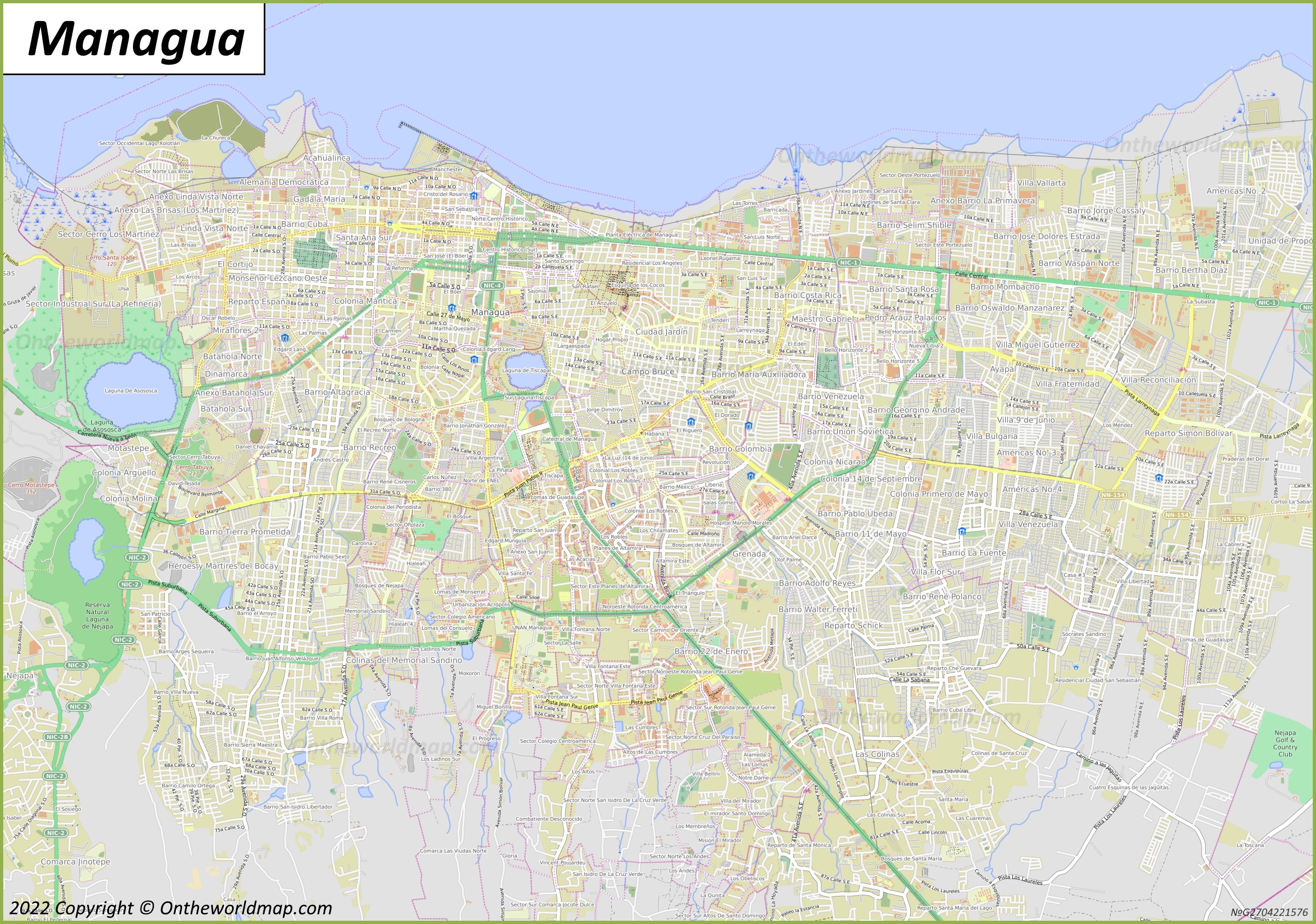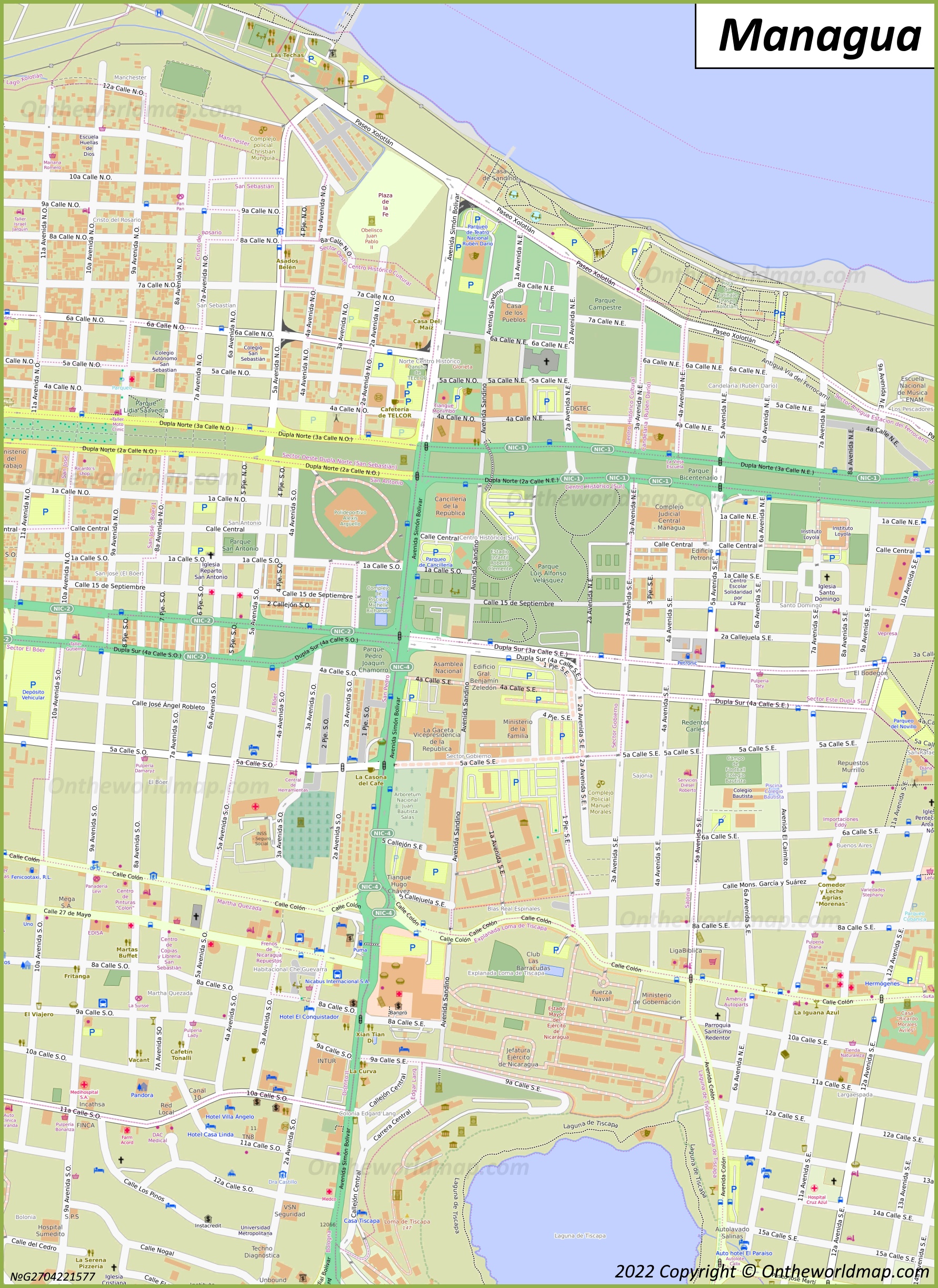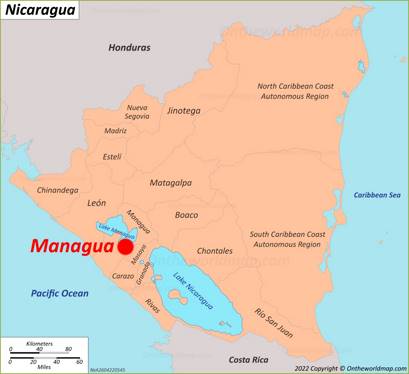Managua Map
Description:
Size: 2435x1709px / 2.03 Mb
Author: Ontheworldmap.com
Map based on the free editable OSM map openstreetmap.org.
You may download, print or use the above map for educational, personal and non-commercial purposes. Attribution is required. For any website, blog, scientific research or e-book, you must place a hyperlink (to this page) with an attribution next to the image used.
Description:
Size: 1782x2446px / 1.69 Mb
Author: Ontheworldmap.com
Map based on the free editable OSM map openstreetmap.org.
You may download, print or use the above map for educational, personal and non-commercial purposes. Attribution is required. For any website, blog, scientific research or e-book, you must place a hyperlink (to this page) with an attribution next to the image used.
Online Map of Managua
About Managua
Managua is the capital and largest city of Nicaragua, located on the southwestern shore of Lake Managua. With a population of approximately 1.1 million inhabitants within the city proper and over 1.4 million in the metropolitan area, it serves as the country's primary political, cultural, commercial, and industrial center.
The city was founded in 1819 and became Nicaragua's capital in 1852, replacing the historical rivalry between León and Granada. Throughout its history, Managua has endured several natural disasters, most notably the devastating earthquake of 1972 that destroyed much of the city center. This catastrophic event significantly influenced the city's modern urban development and architecture.
The climate in Managua is tropical savanna, characterized by distinct wet and dry seasons. The city experiences high temperatures throughout the year, with averages ranging from 28 to 32 degrees Celsius (82 to 90 degrees Fahrenheit). The rainy season typically occurs from May to November.

Notable landmarks and attractions include the Metropolitan Cathedral of the Immaculate Conception, a modern structure built in 1993 to replace the old cathedral damaged in the 1972 earthquake; the National Palace of Culture, which houses the National Museum; and the Tiscapa Lagoon Natural Reserve, featuring a crater lake and the famous silhouette of Augusto C. Sandino. The Plaza de la Revolución (Revolution Square) serves as a significant historical site, surrounded by important government buildings and monuments.

Managua's economy is diverse, encompassing manufacturing, services, and commerce. The city hosts numerous universities, including the National Autonomous University of Nicaragua (UNAN), and serves as a major transportation hub with the Augusto C. Sandino International Airport connecting Nicaragua to various international destinations. Despite challenges related to infrastructure and urban planning, Managua continues to be Nicaragua's primary economic engine, accounting for a significant portion of the country's GDP and employment opportunities.
The Facts:Department: Managua.
Population: ~ 1,061,054 (2022 estimate).
Metropolitan population: ~ 1,400,000.
Main sights: Plaza de la Revolución, Old Cathedral of Managua, Rubén Dario National Theatre, National Palace of Culture, Tiscapa Lagoon, Museum of Acahualinca, Catedral de la Concepción.
Maps of Nicaragua
Cities of Nicaragua
Islands of Nicaragua



